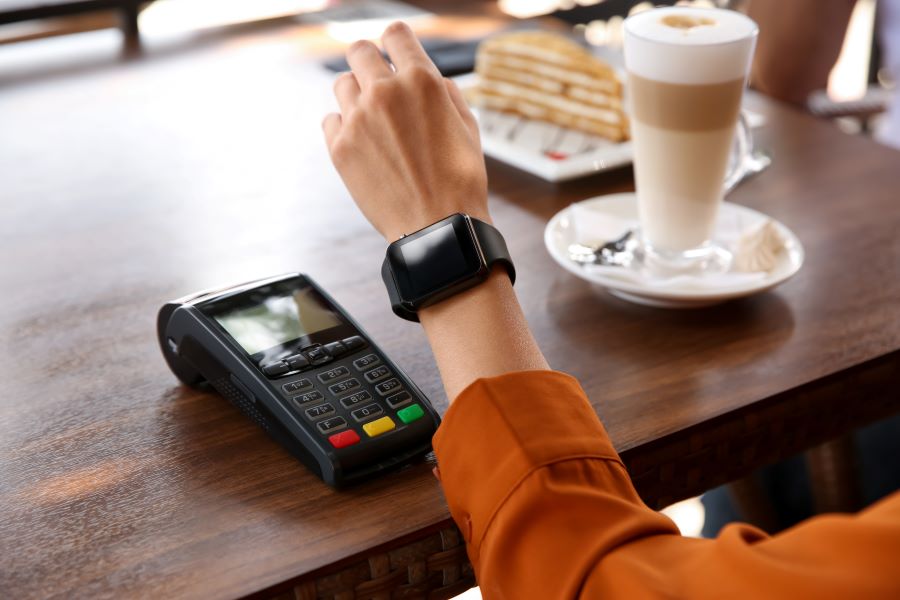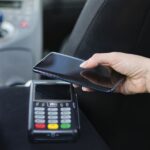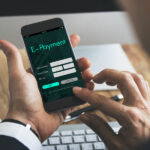Are you tired of the hassle of carrying around cash or digging through your wallet for the right card every time you make a purchase? Perhaps you’re frustrated with the slow and cumbersome process of traditional payment methods, especially in today’s fast-paced world where every second counts.
Imagine the frustration of standing in a long line at the checkout, only to realize you forgot your wallet or your card isn’t working. Or the annoyance of fumbling with coins and bills while the impatient customer behind you sighs audibly. Not to mention the concerns about the hygiene of handling cash, particularly in light of recent health considerations. These inconveniences can add unnecessary stress to your day and detract from the overall shopping experience.
Enter contactless mobile payments – the hassle-free solution to your payment woes. With contactless mobile payments, you can simply tap your smartphone or wearable device at the checkout terminal to complete your transaction swiftly and securely. No more rummaging for cash or cards, no more waiting in line, and no more worries about hygiene. By adopting contactless mobile payments, you can streamline your purchasing process, save time, and enjoy a more seamless and hygienic payment experience. Say goodbye to the frustrations of traditional payment methods and embrace the convenience of contactless mobile payments today.
Quick Links
What are Contactless Mobile Payments
Contactless mobile payments are a convenient and secure way to make digital financial transactions using a mobile wallet app on a smartphone. This technology allows users to store their credit and debit card information on their mobile devices, eliminating the need to carry physical cards.
Unlike using a smartphone as a mobile credit card reader, which requires physically swiping the card, contactless mobile payments use Near Field Communication (NFC) technology. Users can tap their smartphones against a payment terminal to complete the transaction.
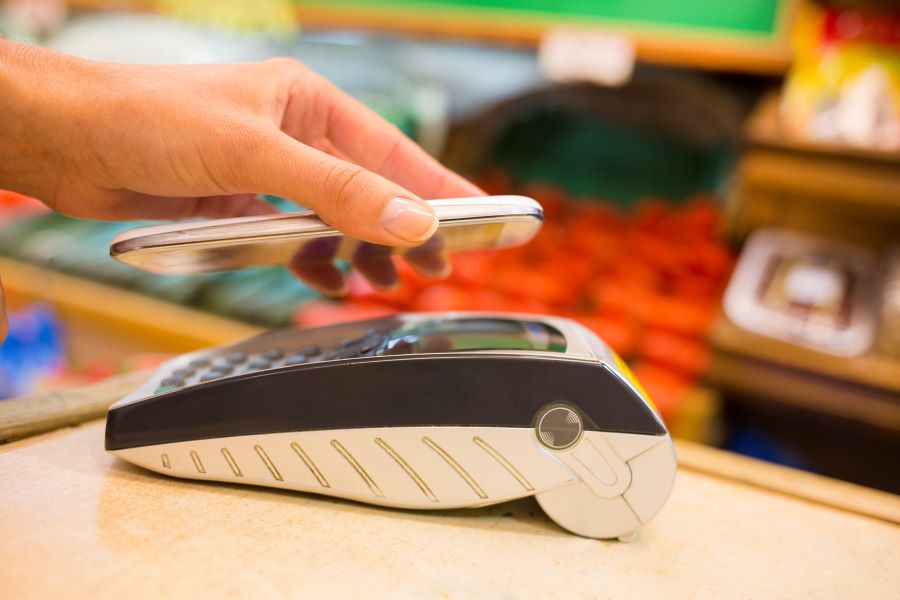
This method offers several benefits: speed, convenience, and enhanced security. Contactless mobile payments make the checkout process faster and more efficient by eliminating the need for physical cards. Additionally, since the payment is made through the mobile wallet, users can securely authorise transactions using various methods such as PIN codes, biometric authentication, or facial recognition.
How Does it Work?
Contactless mobile payments utilise Near Field Communication (NFC) technology to enable seamless transactions. NFC-enabled devices, such as smartphones, have a built-in NFC chip that allows them to exchange data wirelessly with payment terminals.
The smartphone is a virtual credit card when making a contactless mobile payment. Payment apps installed on the device, such as Google Pay or Apple Pay, securely store the user’s credit card information. The user taps their smartphone against the payment terminal to initiate a transaction.
The NFC chip in the smartphone sends a radio signal to the payment terminal, establishing a connection between the two devices. This communication process is extremely fast, allowing for quick and convenient transactions.
Once the connection is established, the smartphone securely transmits the user’s payment information to the payment terminal, such as card details and authentication methods, like PIN codes or biometric data. The terminal verifies the information and completes the transaction, deducting the relevant amount from the user’s credit card.
Contactless mobile payments offer a convenient and secure way to transact without physical credit cards. With the widespread adoption of NFC technology and the availability of payment apps, smartphones have become powerful tools that can turn any compatible device into a digital wallet.
Popular Payment Providers and apps for Contactless Mobile Payments
Several popular payment providers and apps enable contactless mobile payments, offering convenience and security for users. These services are available on various devices, including phones, watches, key fobs, stickers, and wristbands. Let’s explore some of the leading options in this space.
Apple Pay
Apple Pay is a widely used mobile payment app available exclusively for Apple devices such as iPhones, iPads, Apple Watches, and Macs. It securely stores users’ credit card information and lets them make contactless payments at NFC-enabled terminals by simply tapping their devices.
Users must add their credit or debit card information to the app to use Apple Pay. This can be done by manually entering the card details or using the app’s camera feature to capture the card information. Once the card is added, users can pay at participating stores or online by holding their device close to the payment terminal.
One of the key benefits of Apple Pay is its focus on security. When a card is added to Apple Pay, the actual card information is not stored on the device or Apple’s servers. Instead, a unique Device Account Number is assigned to each card, encrypted and securely stored on the device’s Secure Element chip. This means the card information remains secure even if the device is lost or stolen.
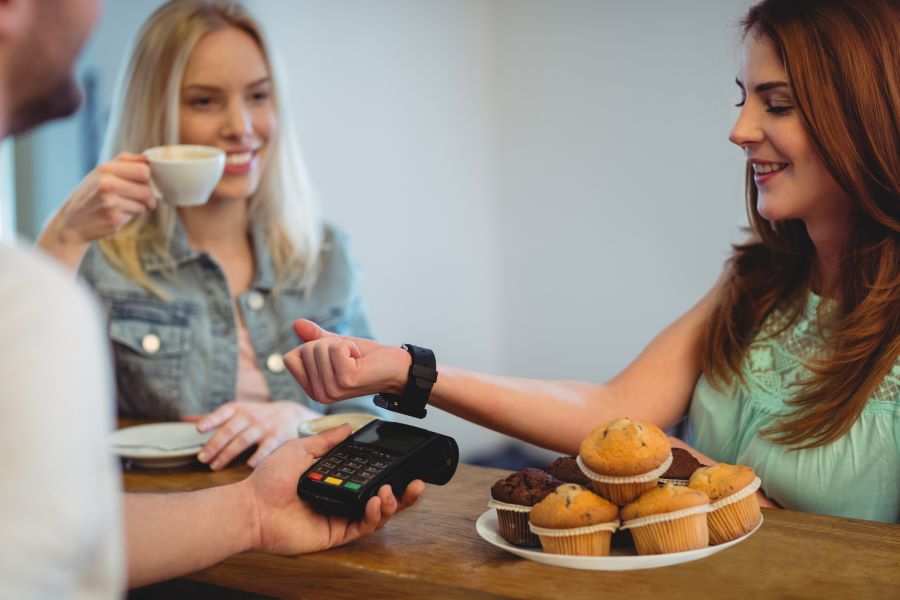
Google Pay
Google Pay, available on Android and iOS devices, allows users to add their credit card information to the app and make contactless payments. It can be used across various devices, including smartphones, tablets, smartwatches, and web browsers.
One of the key features of Google Pay is its compatibility with a wide range of Android devices. Whether you have a smartphone or a smartwatch, as long as it supports NFC (Near Field Communication) technology, you can use Google Pay for contactless payments. This makes it a versatile and accessible payment option for Android users.
Google Pay also provides a convenient way to manage your payment information. You can easily add multiple cards to the app and select your preferred payment method. Additionally, Google Pay records your transaction history, allowing you to track your spending and have a clear overview of your payment activity.
Samsung Pay
Samsung Pay is another popular contactless mobile payment solution available for Samsung devices. It supports NFC technology and Magnetic Secure Transmission (MST), allowing users to pay at traditional magnetic stripe terminals.
One of the key advantages of Samsung Pay is its widespread acceptance. Unlike other mobile payment platforms that rely solely on NFC technology, Samsung Pay’s MST technology allows it to work with traditional magnetic stripe card readers. This means you can use Samsung Pay at almost any payment terminal, making it incredibly convenient and reducing the chances of encountering compatibility issues.
Fitbit Pay
Fitbit Pay is a mobile payment option for Fitbit smartwatches and fitness trackers. It enables users to make contactless payments using their wearable device, eliminating the need to carry a physical wallet or phone.
To start using Fitbit Pay, you’ll need a compatible Fitbit device and the Fitbit app installed on your smartphone. Within the app, you can easily add your payment cards, including credit and debit cards, from major card issuers. Fitbit Pay supports many banks and financial institutions, allowing you to link and use your preferred cards.
Garmin Pay
Garmin Pay is a payment solution available for select Garmin smartwatches. It allows users to add credit and debit cards and make safe and secure contactless payments.
One of the key features of Garmin Pay is its compatibility with a wide range of payment terminals. It uses near-field communication (NFC) technology, which allows you to make contactless payments at any NFC-enabled payment terminal. This means that whether you’re shopping at a local grocery store or grabbing a quick coffee at your favorite café, you can tap your Garmin smartwatch to make a payment.
Setting up Garmin Pay is a breeze. All you need is a compatible Garmin smartwatch and the Garmin Connect app. The app lets you easily add your preferred payment cards, including credit and debit cards. Garmin Pay supports major card issuers, allowing you to link and use your existing payment cards. Once you’ve added your cards, you’re ready to go.
Major UK banks support These mobile payment services, including First Direct, HSBC, NatWest, Santander, Royal Bank of Scotland, Barclays, and Lloyds. With these options, users have a range of choices regarding contactless mobile payments, making transactions quick, secure, and hassle-free.
Frequently Asked Questions
What are Contactless Mobile Payments?
Contactless mobile payments are a convenient and secure way to make digital financial transactions using a mobile wallet app on a smartphone. This technology allows users to store their credit and debit card information on their mobile devices, eliminating the need to carry physical cards.
How Does it Work?
Contactless mobile payments utilise Near Field Communication (NFC) technology to enable seamless transactions. NFC-enabled devices, such as smartphones, have a built-in NFC chip that allows them to exchange data wirelessly with payment terminals. Users can tap their smartphones against a payment terminal to initiate a transaction, and the NFC chip securely transmits the payment information to complete the transaction.
Popular Payment Providers and Apps for Contactless Mobile Payments
Apple Pay
Apple Pay is a widely used mobile payment app available exclusively for Apple devices such as iPhones, iPads, Apple Watches, and Macs. It securely stores users’ credit card information and lets them make contactless payments at NFC-enabled terminals by simply tapping their devices.
Google Pay
Google Pay, available on Android and iOS devices, allows users to add their credit card information to the app and make contactless payments. It can be used across various devices, including smartphones, tablets, smartwatches, and web browsers.
Samsung Pay
Samsung Pay supports both NFC technology and Magnetic Secure Transmission (MST), allowing users to pay at traditional magnetic stripe terminals. It works with almost any payment terminal, making it incredibly convenient.
Fitbit Pay
Fitbit Pay enables users to make contactless payments using Fitbit smartwatches and fitness trackers. Users can add their payment cards to the Fitbit app and make secure transactions on their wearable devices.
Garmin Pay
Garmin Pay is available for select Garmin smartwatches and supports NFC technology. Users can add credit and debit cards to the Garmin Connect app and make contactless payments using their smartwatches at NFC-enabled terminals.
With these options, users have a range of choices regarding contactless mobile payments, making transactions quick, secure, and hassle-free.
Final Words
In a world where convenience and security are paramount, contactless mobile payments emerge as the ideal solution to streamline transactions and elevate the shopping experience. By eliminating the need for physical cards and offering a swift, secure method of payment, contactless mobile payments revolutionize how we interact with commerce. No longer constrained by the frustrations of traditional payment methods, users can simply tap their smartphones or wearable devices to complete transactions seamlessly.
As we embrace the era of contactless mobile payments, it’s crucial to recognize the array of options available, from industry giants like Apple Pay and Google Pay to specialized solutions like Fitbit Pay and Garmin Pay. Each platform offers its unique advantages, catering to diverse preferences and needs. Whether you’re an avid Apple enthusiast or a fitness enthusiast with a Fitbit on your wrist, there’s a contactless mobile payment solution tailored to you.
The future of payments is contactless, offering unparalleled convenience, speed, and security. As we navigate this digital landscape, we invite you to share your experiences and insights in the comments below. How has contactless mobile payment technology impacted your daily life? Are there any tips or tricks you’d like to share with fellow users? Let’s continue the conversation and shape the future of commerce together.
